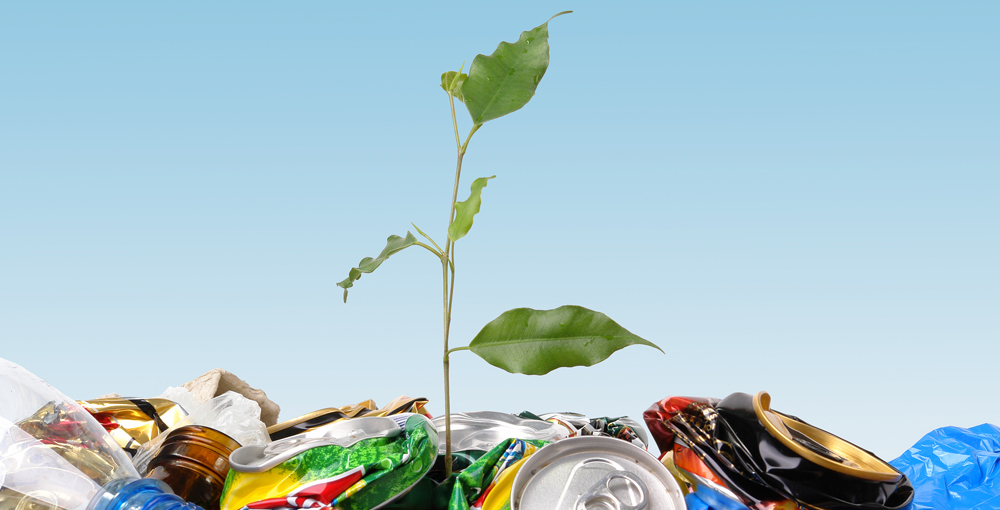A number of factors are driving brand owners to become more environmentally responsible when it comes to designing and producing sustainable packaging. National and international sustainability targets; the need to create cost efficiencies throughout supply chains, and perhaps most importantly of all, consumer pressure are pushing companies to make their packaging lighter, more sustainably sourced, optimised to reduce the use of natural resources, and more easily recycled.
From Baby Boomers to Millennials, consumers have never been more committed to their values when making purchases. Not only is today’s consumer more conscious of what they put on their skin or in their mouth, they’re also increasingly aware of the environmental impact of what their consumer goods come packaged in.
It was once the case that aesthetic considerations held sway for luxury goods packaging. Today, however, environmentally friendly qualities also need to be considered. Whether it’s simply labelling on the packaging informing consumers how to recycle the product, or the more costly use of materials made with sustainable materials or recycled content.
sustainable packaging today
Within the beauty world it’s often the independent brands that like to trumpet their eco-friendly policies and social values. Take the example of US cosmetics brand Pangea Organics, which recently collaborated with Seeds of Change, the largest US producer of organic seeds, to create the first 100% compostable, biodegradable and plantable product packaging for their Ecocentric body/skin-care products. After the product has been used, the consumer soaks the fibre box (created from 100% post-consumer paper board) for one minute in water and then plants it into the soil, allowing medicinal herbs to grow.
Aveda is another beauty brand that likes to champion eco-friendly packaging. Last year the US company launched two moisturising products in tubes made of post-consumer recycled material and bioplastic made from sugarcane ethanol, a sustainable and quickly renewable resource. The firm is also switching the bottles it uses to ones made from 100% post-consumer recycled PET and has vowed to phase out the use of virgin petrochemical plastics.
reusing waste
Confectionery manufacturers are also rethinking their approach to packaging. For instance, Italian firm Ferrero is researching a novel way of using some of the leftover hazelnut shells it uses to make its famous Nutella spread. Ferrero is the world’s biggest purchaser of hazelnuts, using 25% of the world’s supply. In collaboration with renewable packaging company Stora Enso and PTS, a German research institute, Ferrero is looking to develop board packaging for its chocolates made from hazelnut shell pulp.
alternative packaging
Wine packaging has also taken steps to become more environmentally conscious. Lighter glass bottles are now more common, and more effort is being taken to recycle both natural cork and aluminium screw cap closures. One Californian winery, Truett Hurst, even produced a wine in a paper bottle. The PaperBoy bottle featured a moulded outer shell made of recycled corrugated waste paper, while the plastic liner and plastic screw cap kept the wine in optimum condition. With 80% of the PaperBoy bottle coming from recycled material, Truett Hurst claimed the bottle’s carbon footprint was 67% smaller than a traditional glass wine bottle. Although Truett Hurst faced some design issues that forced them to suspend production, this was a brave step that put them firmly at the top of the innovation race for sustainable packaging.
our commitment to sustainability
Here at Hunter we understand that today’s consumers expect brands to take care to minimise the impact their packaging has on the planet. It is for that reason that we’ve collaborated with family-owned UK packaging supplier James Cropper to develop a range of packaging paper, which is partly made from the husks of cocoa beans. They are one of the chocolate industry’s most abundant, yet reusable, waste products. For every metric ton of dry cocoa beans produced, there are over 10 tons of husks left over as waste.
We’ve also worked with James Cropper to create a range of stylish, coffee-themed luxury packs using papers made from—yes, you guessed it: recycled coffee cup fibres. Billions of single-use coffee cups end up in landfill each year. Yet thanks to James Cropper’s coffee cup recycling plant, the first of its kind anywhere in the world, what was effectively rubbish now has a potentially productive new use.
Finding the right balance between developing more sustainable packaging, while also ensuring you deliver everything else that consumers also expect such as functionality and an appealing design, while keeping costs down, is undoubtedly a challenge. Yet we believe it’s one worth pursuing.


